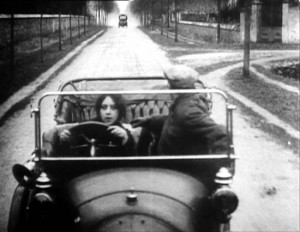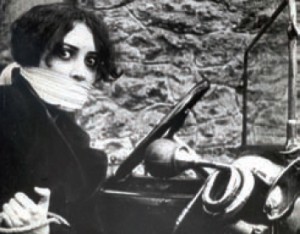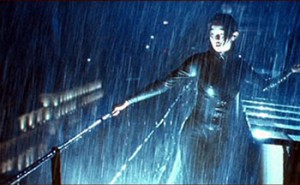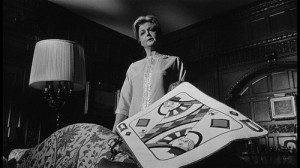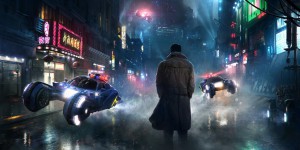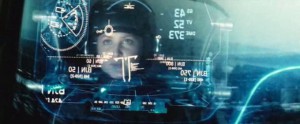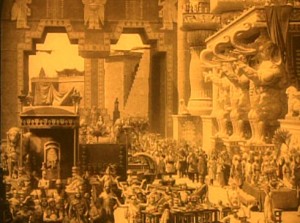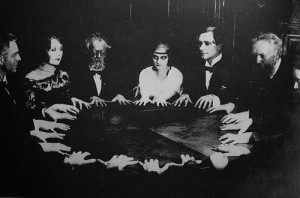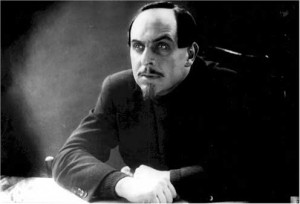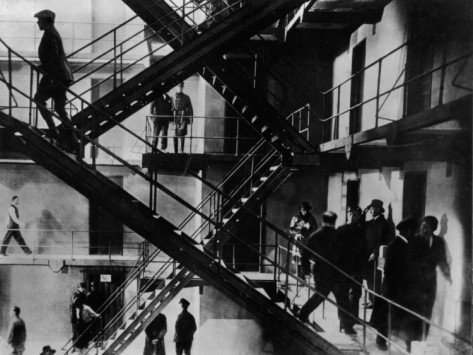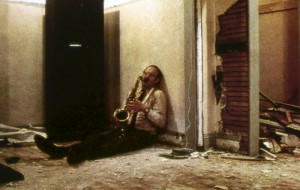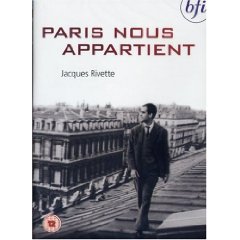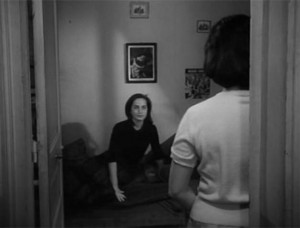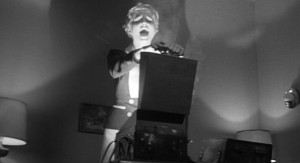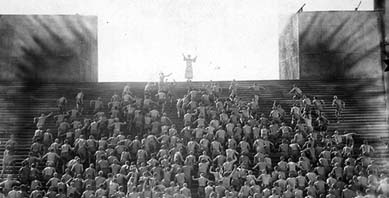An updated revision of a 1999 essay, commissioned by and posted on Slate on May 24, 2017. — J.R.
One of the paradoxes of conspiracy thrillers is that seeing the world as if it were as orderly and coherent as a work of art is both satisfying and terrifying. If everything makes sense, then it’s hard to avoid the premise that someone somewhere is creating that coherence–either God or an equally unseen puppet master. And the fact that we don’t see the strings being pulled means that our imaginations are invited to sketch them in, making us co-conspirators in the process: And opting out of this creative participation means accepting chaos: “If there is something comforting—religious, if you want—about paranoia,” declares Thomas Pynchon in Gravity’s Rainbow, “there is still also anti-paranoia, where nothing is connected to anything, a condition not many of us can bear for long.”
It’s a tradition that harks back to Louis Feuillade’s silent serial of 1915-1916, Les vampires, about a gang of ingenious working-class criminals headed by a beautiful woman and preying on the rich—a crime thriller evoked in Olivier Assayas’ 1996 dark comedy about a contemporary remake, Irma Vep. All the basic elements that we associate with movie conspiracies are fully present, at least in some rudimentary form: high-tech surveillance techniques, secret lairs, hidden wall panels, intricately concealed weapons, elaborate disguises, and diverse forms of mind and memory control.
This arsenal of paraphernalia and technology, suggesting that the ordinary world isn’t quite what it appears to be and that everyday life is full of concealed plots and hidden dangers, is surely a staple of a genre that didn’t have to wait for video surveillance or the digital revolution before it took over people’s imaginations, and has only spread further in this interconnected, digital century. Though the political casts of the designated villains fluctuate wildly according to the ideology of the country and period–ranging from the anarchist “vampire” gang to the red spies of Cold War thrillers, to the nearly invisible capitalist tycoons of Cutter’s Way (1981), to the smug government bureaucrats in The Ghost Writer (2010)–the evil designs remain more or less the same. Consider the hidden lairs, disguises, and high-tech gadgets in the James Bond movies and their many spin-offs (such as the recent Bourne spy thrillers), the elaborate brain-washing techniques in The Manchurian Candidate (1962), or the diverse paranoid patterns in such Philip K. Dick adaptations as Blade Runner (1982), Total Recall (1990 and 2012), Minority Report (2002), and A Scanner Darkly (2006).
It was part of the poetic genius of Feuillade to plant these worries in an immediately recognizable workaday world whose reality was generally vouchsafed by a fixed camera in contemporary locations. Mise-en-scène and relatively long takes were the basis of his aesthetic, and unlike the work of D.W. Griffith around the same time across the Atlantic.
Conspiracies and masterplots weren’t exactly absent from the intrigues of Griffith’s The Birth of a Nation (1915) and Intolerance (1916): think of the racial paranoia of the former and the latter’s visual rhyme effects linking strife in modern America with the Crucifixion, the Fall of Babylon , and the Saint Bartholomew’s Day Massacre. But these links took on different shapes and emotional meanings because they were mainly articulated in terms of montage. It arguably wasn’t until Fritz Lang in 1920s Germany began to fuse the formal discoveries of Feuillade and Griffith that the paranoid thriller as we know it today began to take shape.
Lang’s Dr. Mabuse, The Gambler (1922) originally opened with a brief, rapid montage depicting recent violent events in German history such as the Spartacus uprising, the murder of Walter Rathenau, and the Kapp putsch. But even without such a prologue, this two-part thriller furnishes all the conspiracy theories one could want. It begins, in fact, with an intricate demonstration of how the eponymous, anarchistic villain (Rudolph Klein-Rogge), whose tentacles of power reach into every crevice of contemporary society, orchestrates the collapse of the stock market by masterminding the theft of a secret trade contract and the manufacture of counterfeit banknotes before turning up at the stock market in disguise to wreak his final mischief.
The compulsive continuity of Lang’s editing throughout this opening sequence and the pitiless checkerboard view of the world implied in his overhead shots display the combined precision of Griffith’s montage and Feuillade’s mise-en-scène, and imply hidden connections in the world that the viewer’s imagination is invited to spell out. In Lang’s next paranoid thriller, Spies (1928), again starring Klein-Rogge as a Mabuse-like figure named Haghi, the two central graphic images are recurring close-ups of Haghi wreathed in cigarette smoke and a network of crisscrossing iron stairways and four-tiered balconies located just outside his secret headquarters. Apparently located somewhere inside a bank, this dense passageway also suggests a prison — an impression fostered the first time we see it when someone “miraculously” saved from the gallows is delivered directly to Haghi’s lair as the latest recruit into his spy ring. Even odder, the appearances of an elderly nurse and Haghi’s confinement in a wheelchair intermittently suggest a hospital.
What’s satisfying, in short, about both the close-ups of Haghi and the shots of the stairways is that they effectively explain everything in the plot–showing respectively how one figure controls the universe and how practically every important sector of institutional power (bank, prison, hospital) appears to be adjacent to his private chambers. Allegorically, both images suggest the nexus of Lang’s own power as artist-filmmaker, creating all these continuities and causal effects on his editing table and thereby implying that the satisfactions of conspiracy are closely allied to the empowerment of artistic control. We should recall that Adolf Hitler started out as a frustrated artist, and an authoritarian type such as Donald Trump, who probably has less interest in art than any other U.S. President in history, still saw fit to title his ghostwritten manifesto The Art of the Deal.
The same implication comes to the fore in Blow Up (1965), whose hero-sleuth is an art photographer. An audio variant of the same theme can be found in The Conversation (1974), where the moral qualms of a bugger about what his ”evidence” might be used for persuades him to imagine a particular murder plot that gratifies his guilt-ridden Catholic conscience. From another angle, one might argue that a craving for a coherent historical meaning in John F. Kennedy’s assassination is what goaded writer-director Oliver Stone into making JFK (1991) and also persuaded a good many people to buy its particular conspiracy theory–-an artistic impulse on both counts.
When mental quests to uncover secret connections and buried histories yield uncertain results, an intellectual self-consciousness about paranoia helps breed conspiracy in the beholder’s imagination. In Jacques Rivette’s first feature, Paris Belongs to Us (1961), intimations about a worldwide conspiracy crisscross with the faltering efforts of an ambitious but under-funded theater group to stage a production of Shakespeare’s Pericles. Similar contrapuntal effects between masterplots and collective artistic endeavors are found in Pynchon’s V and The Crying of Lot 49.
Paris Belongs to Us is visibly influenced by Lang as well as by Robert Aldrich’s noir thriller Kiss Me Deadly (1955), a violent detective story in which anxieties about the atomic bomb are dovetailed into the myth of Pandora’s Box. Both films follow an aesthetic for conspiracy theories by positing white, the fusion of all other colors, as the “final solution” for rendering the illegibility of modern life in legible form. In Aldrich’s film, the quest is for a strongbox containing plutonium that emits a blinding white light when opened and ultimately unleashes a nuclear holocaust that concludes the movie. Similarly, a pivotal sequence in Paris Belongs to Us shows several characters watching the Tower of Babel sequence in Lang’s Metropolis until the film suddenly breaks and they’re confronted by the gaping stare of a blank white screen. The Tower of Babel myth evokes Pynchon’s notion of anti-paranoia—the chaos arising from the multiplicity of languages and the breakdown of communication–just as surely as Pandora’s Box posits the solution to that impasse in apocalyptic terms. Like the whiteness of the bathroom where The Conversation’s bugger arrives at his own bloody conclusion–a climax that can be traced back to the bathroom murders of Les Diaboliques and Psycho–these white enamel revelations become in effect blank sheets of paper on which the paranoid message gets written.
Note: This is an updated adaptation of an essay originally published in Scenario, Spring 1999, Vol. 5, No. 1.

